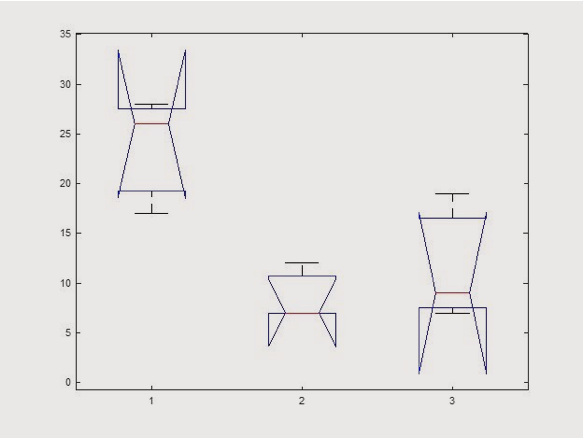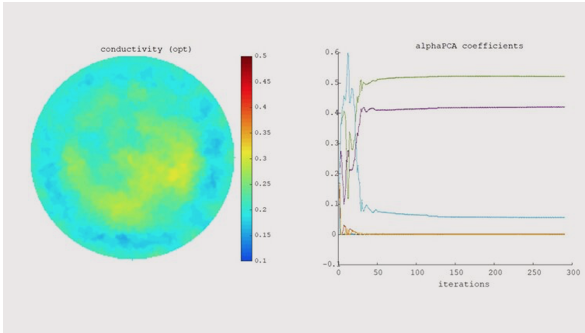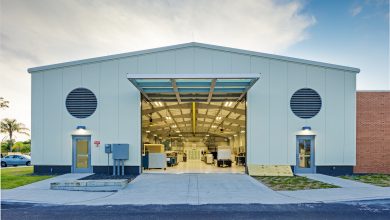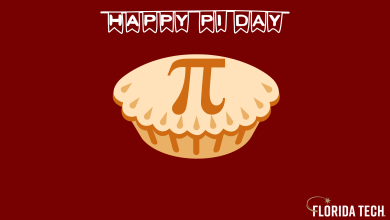2 Projects Prepping Seniors for Careers in Mathematical Sciences
The university’s flagship project and a Panther rite of passage, the engineering and science student design and research program has existed in some form or another almost since the university’s inception in 1958.
A multidisciplinary capstone project for all science and engineering seniors, senior design is a yearlong course in which students bring a project from concept to completion, simulating a real-world work environment and culminating in the Northrop Grumman Engineering and Science Student Design Showcase, where teams present their work and field questions from peers, faculty, industry professionals and local leaders.
Due to the COVID-19 pandemic, this year’s seniors, like the rest of the world, had to adapt to unforeseen challenges, like in-person class cancellations and short-notice closure of the L3Harris Student Design Center. While most students’ projects look a little different from how they had envisioned them at the beginning of the year, we are proud to continue the tradition of showcasing them to their peers, community and, most important, prospective employers through the Northrop Grumman Virtual Student Design Showroom.
Prepare to be impressed—the showroom hosts descriptions, photos, video presentations, display boards and more for the more than 100 projects completed this year.
Here, we’ve compiled a list of
2 Projects Prepping Seniors for Careers in Mathematical Sciences
1. Women’s Lacrosse: Who Wins Championships—Offense or Defense?

If you’re a sports fan, it’s likely you’ve heard someone mutter the phrase, “offense wins championships” or “defense wins championships.” To get to bottom of this debate, one student analyzed game data in her particular sport of interest: women’s lacrosse.
The research focused on the University of Maryland’s (UMD) women’s lacrosse team, analyzing the offensive and defensive statistics from the team’s last 10 national championships.
“My focus was to look at the championship games they won and lost from 2000-2019 in order to analyze the difference in the significance between offensive and defensive stats from championship wins and championship losses,” says Alexis Townsend, the student conducting the research.
While, depending on the circumstances of the game, both phrases can be true, in this case, Alexis concluded that UMD’s offensive performance was more impactful in the team’s championship efforts.
Learn more about the project’s methods and results.
Team Member
Alexis Townsend
Faculty Advisor
Munevver M. Subasi, associate professor and department head, mathematical sciences
2. Testing alternate methods for breast cancer screening

Breast cancer is one of the most common types of cancer diagnosed in the world. Unfortunately, the screening procedure required to diagnose the cancer—a mammogram—is painful and expensive.
However, electrical impedance tomography (EIT) provides an alternative.
One student’s project, which built on work done by Ugur Abdulla, mathematical sciences department head and professor, and Vladislav Bukshtynov, applied mathematics assistant professor, evaluates several methods of altering the principal component analysis (PCA) portion of an algorithm to include the use of multiple sample sets. The project explored several multisample PCA applications, evaluating how effectively they reproduce different shapes, including ellipses and a priori image of breast cancer pulled from a mammogram image.
“Knowing the way that each sample gets optimized by the code tells how valuable each size of circle is when attempting to recreate an image. This project will continue with the goals of reconstructing different shapes using multi-sample PCA methods.”
Learn more about the project’s methods and results.
Team Member
Briana Edwards
Faculty Advisor
Vladislav Bukshtynov, assistant professor, mathematical sciences
Impressed and ready for more? Check out:
- 5 Projects Prepping Seniors for Careers in Computer Engineering and Sciences
- 4 Projects Prepping Seniors for Careers in Biomedical and Chemical Engineering/Sciences
- 5 Projects Prepping Seniors for Careers in Ocean Engineering and Marine Sciences
- 4 Projects Prepping Seniors for Careers in Aerospace, Physics and Space Sciences





